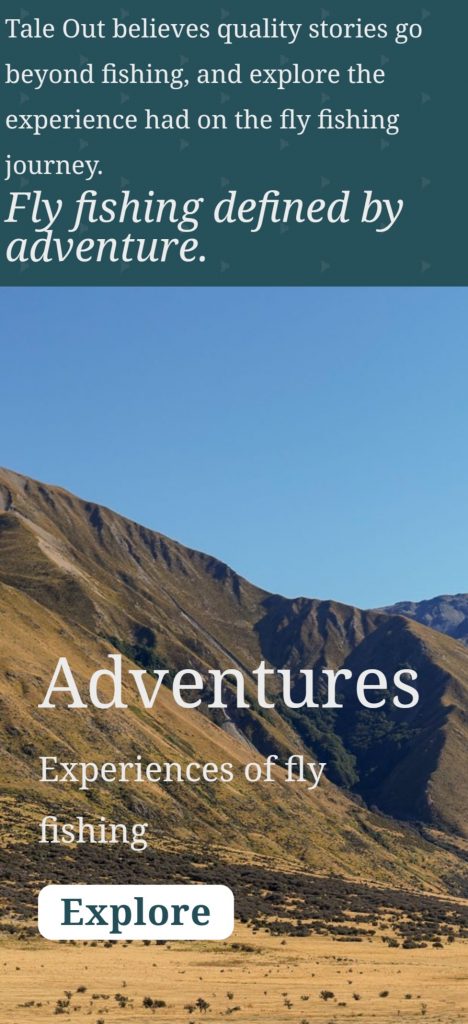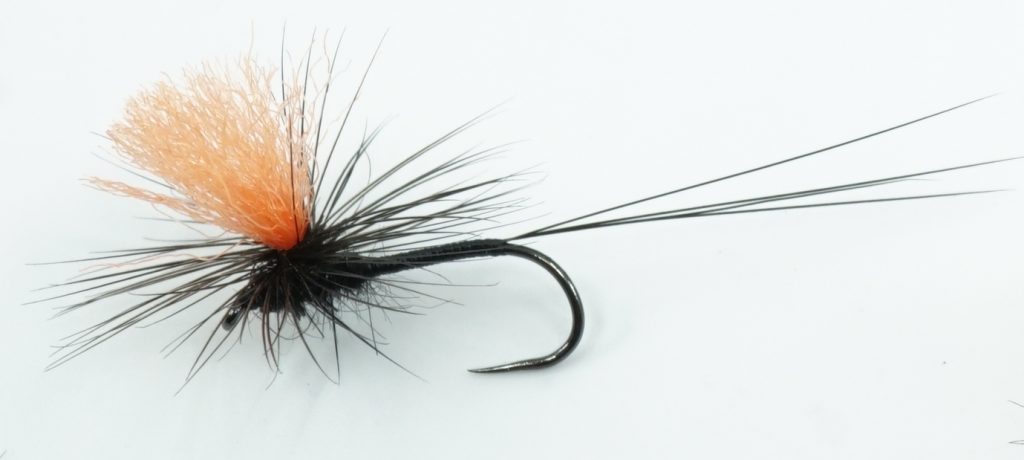Latest has arrived here.
Key points:
- Trout Cod Action Plan
- Repainting of the big trout at Adaminaby declared a failure
- Latest NSW Recreational Fishing Trust annual report is online
- Brogo Dam gets Estuary Perch and Bass stocking

Latest has arrived here.
Key points:
CAA was approached by a local Canberran Henry Delves, who is the developer of a new fly fishing journal/website.

Henry explained:
I would like to share our free online fly fishing journal, Tale Out with the members of the Canberra Anglers. As a free online fishing resource Tale Out is likely something that your members would be interested in.
The most efficient thing for the club’s members to do is to sign up to the free monthly newsletter. This will keep people in the loop when our articles are published.
Tale Out is taking a different approach to our fly fishing stories, speaking more to the experience rather than the traditional ‘grip and grins’. We hope it resonates.
We’ll be inviting Henry to be a speaker next year.
The following gives you a snapshot of the content.

What can I say about Rod’s mulloway – hmm, I did man the net .
Well done to Ryan for organising an excellent event at Tuross – he even put on some perfect weather and lots of fish. Little did he know that organiser responsibilities extend to assembling the trip report for Burley Line.
The shirt and cap sale was a great success, except for my poor arithmetic. For those who missed out, the club does hold a few for sale – speak to BJ. Claude and I are considering whether to follow it up next year with some fancy dye-sublimate shirts. They are all the rage up North and maybe we could follow suit.
Just a reminder here for the few members who have not paid up their 2023/24 subscriptions. Recall that to be covered by our public liability insurance you have to be financial. All the information on rates and how to pay are here.
We’re coming towards the end of the year and gives me pause to think – 2024 will be my 20th year producing this newsletter. It has been a pleasure, but I will likely need some assistance next year due to family travels. Anyone want to help out?
I probably won’t produce a January edition, but if you have some stories to tell, feel free to email them into me. If there is enough copy I’ll put out a ‘holiday edition’, otherwise, my plan would be to put something out early February.
The December meeting by the lake will be the last until 14 February, but Claude will gather the keener anglers to chase the feisty carp on 14 January. If I don’t see you at the barbeque, all the best for the festive season, take care on the road and don’t forget to slip/slop/slap.
Information from a CRAIG COLTMAN article.
People have expressed concern that the links to Flystream ask for signup/signin. On my phone I go straight in but I’ve discovered that my phone is routinely in “incognito” or “private” mode. Look to see how you can do it with your PC

Great for rivers and lakes.
From mid-December to mid-March, my go-to fly up here the Hi-vis Black Spinner. Spinners are particularly important on lakes as the predominant form of mayfly. Unlike lakes where dun hatches are the feature, on many waters up here, the nymphs crawl out of the water to hatch, so the dun hatch as such, is missing. As a result, the duns are less available to the trout, while the spinners become more important. Have a look for nymph shucks clinging to rocks protruding out of the water. When they are present, a black spinner pattern is always a good bet.
Usually fished in bright sun, which helps in polaroiding the fish. However, the combination of bright sun and clear water can make a standard black spinner very hard to see. To overcome this, tie with a fluorescent orange post. This spinner stands out a lot better on the water, and the trout don’t seem to mind the bright post. In fact, I sometimes think the orange makes the fly a more obvious target for them.

Releasing a black spinner feeder.
Usually fish this fly on its own. A recommendation is to use a 9ft nylon leader with a fast taper, with 1.2 metres of .18mm fluorocarbon tippet. The line loads up quickly and will punch into the wind, which is important to consider when polaroiding if you are fishing the Lakes.
It is equally effective anywhere black spinners are found.
Tying Materials
Hook – Gamakatsu S10-B, size 12
Thread – Black 8/0
Tail – Black Micro Fibets
Body – Fine fur dubbing
Post – Hi-vis orange Antron
Hackle – Black cock hackle
Tying instructions
Keyword dryfly
Peter just forwarded me an email from the Australian River Restoration Centre.
They are conducting a short survey into community understanding of the river. This is to inform their advocacy activities.
Survey starts here.
The draft action plan is open for public comment till 17 Nov … not much time folks.
The draft suggests there could be significant impact on the stocking of other fish including trout, also restrictions on fishing in trout cod identified sanctuaries.
Public presentations are being held at various locations including Queanbeyan:
Trout Cod Action Plan Community Workshops:
Monday 13/11/23 – Wagga event at Mantra Pavilion, 22/30 Kincaid Street, Wagga Wagga, 5.30pm-7.30pm registration open here
Tuesday 14/11/23 – Barooga event at Barooga Sports Club, 10 Burkinshaw Street, Barooga, 5.30pm-7.30pm registration open here
Wednesday 15/11/23 – Bathurst event at Panthers Club, 132 Piper Street, Bathurst, 5.30pm-7.30pm registration open here
Thursday 16/11/23 – Queanbeyan event at the Royal Hotel, 85 Monaro Street, Queanbeyan, 5.30pm-7.30pm registration open here
Available here:
https://us4.campaign-archive.com/?u=8ee287affb9dbb289b12fbd77&id=3fe1b7c8db
Key points:

Many thanks to those who provided words and photos.
A few reports here from Opening Weekend. Seems that those who went up had some very good results – well done all.
Reports from Lyle Knowles shows the river is producing well, albeit a bit smaller than we’d like.
Peter has done well on local lakes too. Lovely colour on that yellowbelly.
Ryan is set to take us to Tuross and Texas Mike has shared a view of some of his more successful flies for Tuross – very kind of him. They look very different to the pineapple express nymph that John led us for Oct fly tying.
MAS has been busy again. Their efforts with Snowy Hydro and Rec Fishing Trust to improve access roads around Snowy Lakes continues along with placing style to help us get over fences. Peter and I got to put in some quite large ‘fingerling’ browns into selected sites on the Snowy River – a great day exploring these lower reaches.
A beaut YouTube video with some simple, but very useful, fly tying tips. Have added to our Flytying and ‘tips’ blog.
Some entertaining and inspiring stuff in my ‘In Box’ this month. Lots of news, especially about brumbies in KNP.
I forgot to remind those last few that fees are due.
This popped up in my inbox. Some useful advice for those who catch and release.
https://www.ginkandgasoline.com/fly-fishing-tips-technique/14-ways-to-prevent-fish-mortality/
Claude provided this link with some really useful tips.